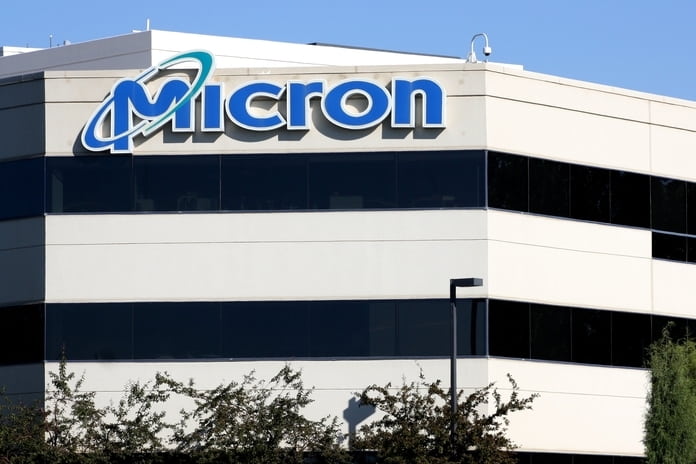As of Tuesday morning trading, shares of Micron Technology Inc. (NASDAQ:MU) were down more than 5% after the memory chip manufacturer stated that it anticipates being hit by “challenging” market circumstances.
Micron’s Revenue to Be Impacted By Lower Chip Demand
Executives from Micron stated in a filing before an investor presentation that they anticipate that revenue for the fourth quarter “may come in at or below the low end of the revenue guidance range provided in our June 30 earnings call,” but did not provide a specific range.
In its June results release, the company forecasted revenue of $6.8 billion to $7.6 billion.
The management team at Micron has lowered expectations for industry bit demand growth in DRAM and NAND compared to the earnings call on June 30, the executives wrote in the filing on Tuesday. They noted that they have recently observed “a broadening of customer inventory adjustments” that have led to this.
The company stated in its filing that “[w]e expect a challenging market environment in FQ4 22 and FQ1 23.”
According to Micron management, chip shipments would reduce sequentially in the first quarter of the company’s fiscal year, “and we expect significant sequential declines in revenue and margins.” They also anticipate negative free cash flow in the first quarter of the fiscal year.
Later on Tuesday, Chief Financial Officer Mark Murphy remarked at a KeyBanc conference, “It’s very difficult to stop capex in the very short term, and we have some very critical technology programs you need to invest in. As a result of those two things, we do expect to be negative free cash flow in the first quarter.”
The “biggest stick in the eye” from Micron’s release, according to Jordan Klein of Mizuho, a desk-based analyst connected to the sales team rather than the research section, was the disclosure of free cash.
He stated, “Many have highlighted that as bad as conditions in memory might get, MU would remain cash-flow positive through the ultimate downturn. Well, that is not happening. Not the end of the world, but adds pressure to the view MU is safe to own close to 1x book value as that book value not going lower.”
Micron “[p]robably still is safe, but less so than prior expectations,” he continued.
The company also disclosed on Tuesday that, “adding to the WFE capex reductions discussed in our June 30 earnings call,” it will reduce capital expenditures for wafer-fab equipment starting in fiscal 2023.
According to the report, executives “now expect FY23 total capex to be down meaningfully versus FY22.”
Shares of semiconductor equipment manufacturers Lam Research Corp., Applied Materials Inc., and KLA Corp. are also suffering due to the announcement.
Executives from Micron have joined those from sister chipmaker Nvidia Corp. in issuing a revenue warning.
Micron’s Management More Confident About Long-Term Outlook
Despite their less optimistic outlook for the near future, Micron executives appeared more confident about the long term, announcing earlier on Tuesday that they planned to invest $40 billion in American manufacturing by the end of the decade by utilizing incentives provided by the CHIPS and Science Act.
According to Chief Executive Sanjay Mehrotra, the company wants to increase domestic memory production from its current share of less than 2% of the world market to “up to 10%” during the next ten years.
Over the last three months, Micron shares have decreased by 14.1% while the S&P 500 has increased by 3.5%.
Micron Invests to Build Memory Plants
By the end of the decade, Micron Technology Inc. plans to invest $40 billion in expanding the capacity of the US semiconductor manufacturing industry with the aid of “anticipated” government subsidies and credits.
The Boise, Idaho-based memory company said in a statement on Tuesday that it intends to start producing chips after 2025 and that it will generate up to 40,000 jobs. According to Micron, the investment is being financed with subsidies it anticipates receiving under the Chips and Science Act.
Featured Image: Megapixl © Rdboes
















